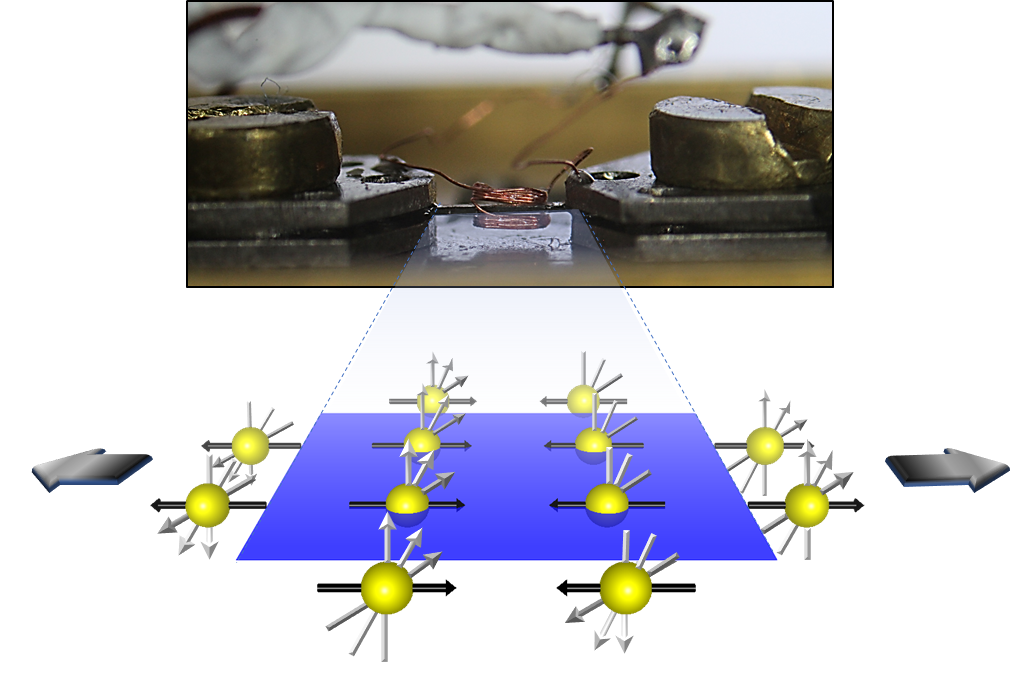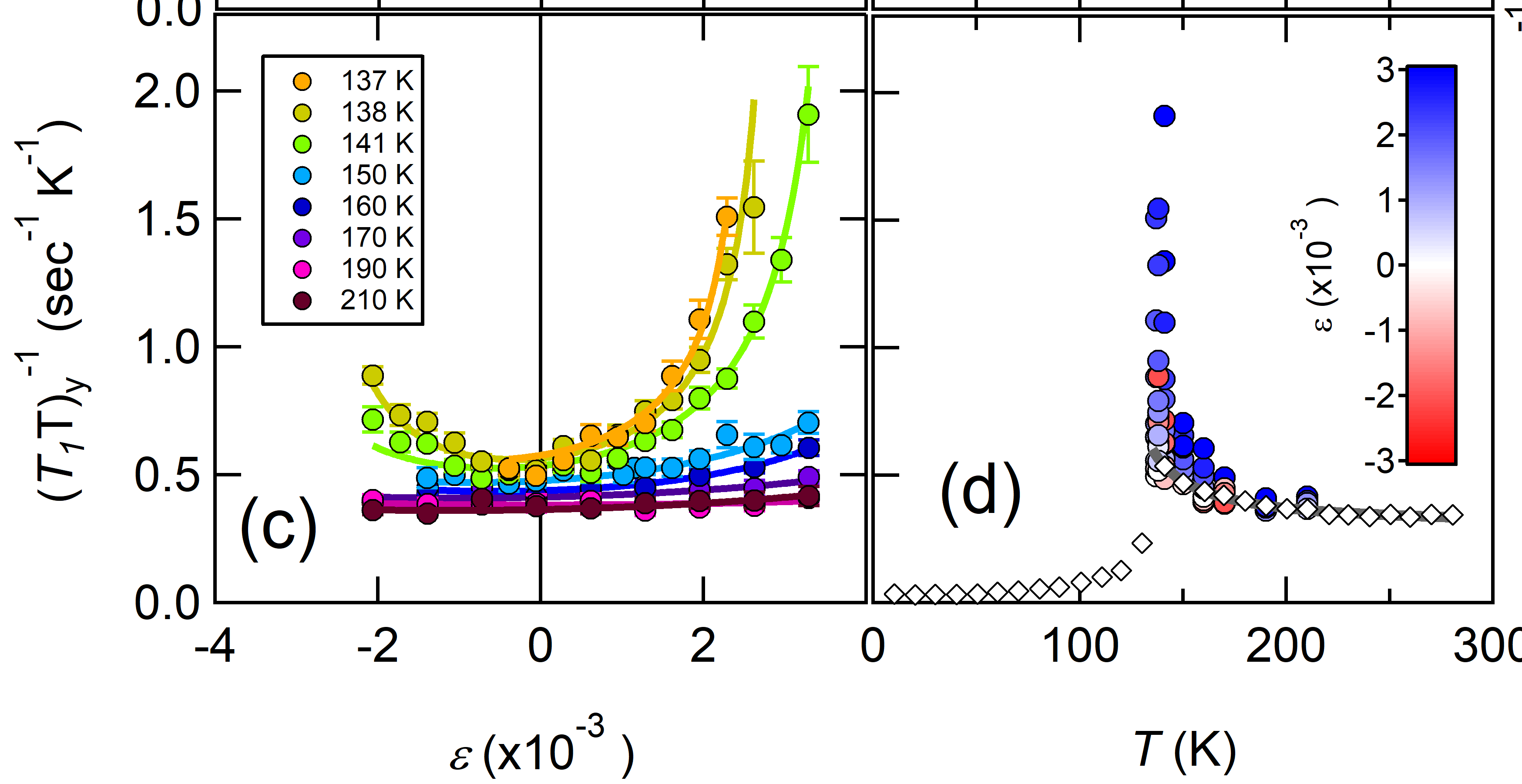Spin-Polarization Control with Strain in Nematic Materials
Our work on NMR under strain has recently been published in Nature Communications.
This study was focused on the piezomagnetic properties of iron-based superconductors. The piezomagnetic effect is similar to the piezoelectric effect, albeit much rarer. The piezoelectric effect is most commonly known as the reason that a flint in a cigarette lighter will create a spark. When the crystalline material is compressed or stretched, it creates a large electric field that causes a voltage breakdown (the spark). Rather than inducing an electric field, strain induces a piezomagnetic material to become magnetized. Iron-based superconductors are materials that conduct electricity without any dissipation, and may someday replace the high voltage transmission lines used to carry electrical power from power plants to our homes and factories. Eight percent of the power generated in the US is lost to dissipation in the transmission lines, and if we could replace even a fraction with superconducting materials, there would be a tremendous economic and environmental impact. (8 percent is roughly 40 standard power plants running 24/7).
The challenge for superconducting transmission lines is that the material needs to be very cold (-300 F), so a holy grail of many researchers is to design superconductors that can operate at higher temperatures. In order to do so, it is vital to understand how these materials work at a fundamental level. Many superconductors are known to have some sort of magnetism, but the new effect we studied is how this magnetism is coupled to the strain on the crystal. We conducted tests of the magnetic properties while carefully controlling the level of strain. We found that not only does strain increase the magnetic transition temperature, it also may change the direction of the magnetic order. These results are important because the magnetism is tied to the superconductivity, hence the strain on the crystal can have an effect on the superconducting properties.

There are some interesting potential applications for this study. First, a piezomagnetic material in which the magnetization direction can be altered by strain could have a range of useful industrial or electronic applications. Furthermore, our study demonstrates a new non-invasive approach to image stress and strain in bulk crystalline materials, in much the same way that magnetic resonance imaging can study the human body.
The study focused on the behavior of the NMR spin lattice relaxation rate under strain. By measuring the anisotropy of the spin fluctuations and their response to strain, we were able to discern the nematic order parameter. More importantly, we find that this nematic order has multiple components, associated with spin fluctuations in different directions. Different components have different magnitudes, and apparently the component for fluctuations along the c-axis is greater than for the in-plane fluctuations associated with the ground state order at zero strain. These results imply that under sufficient strain, c-axis ordering of the moments may actually be more stable.

